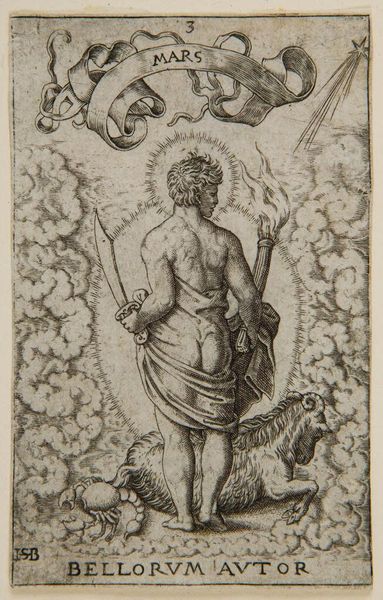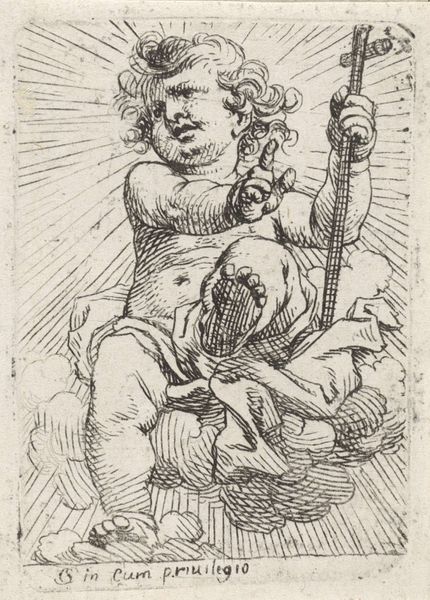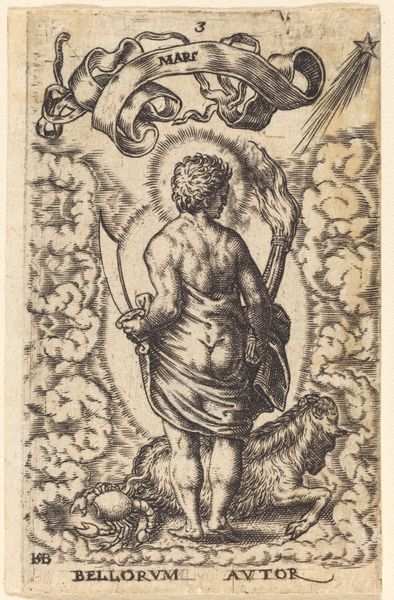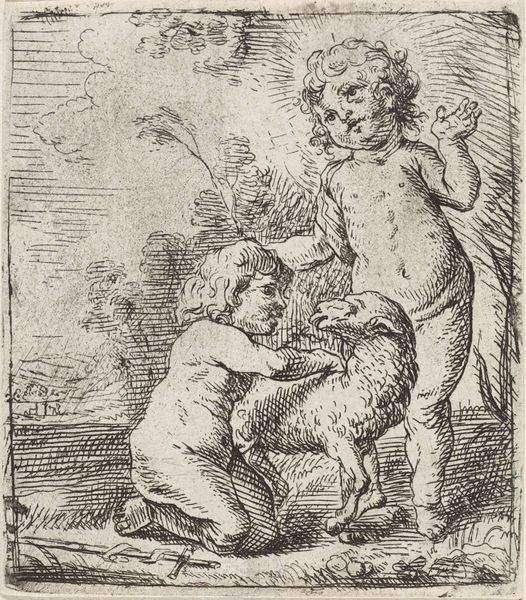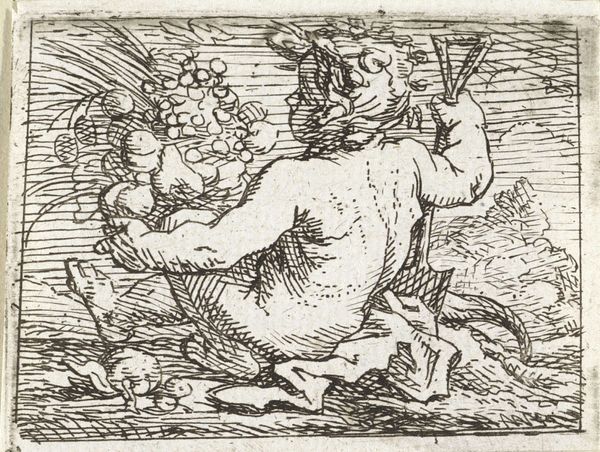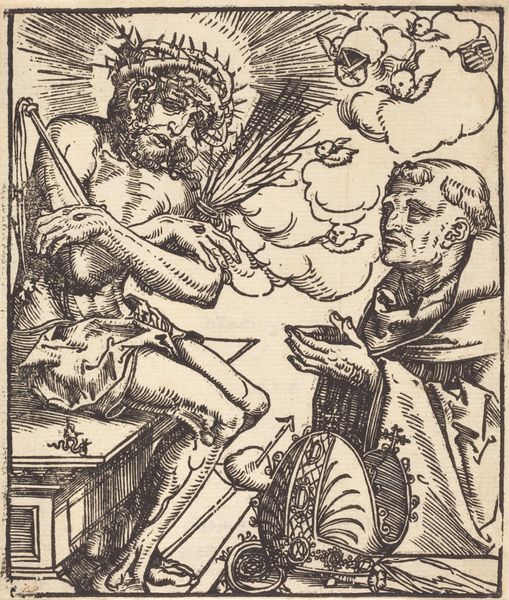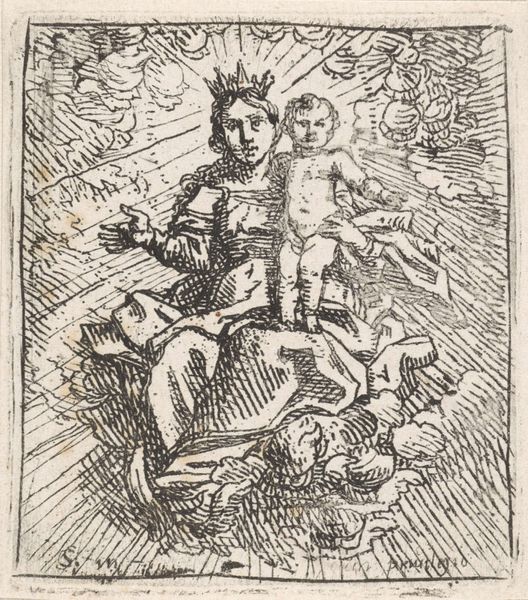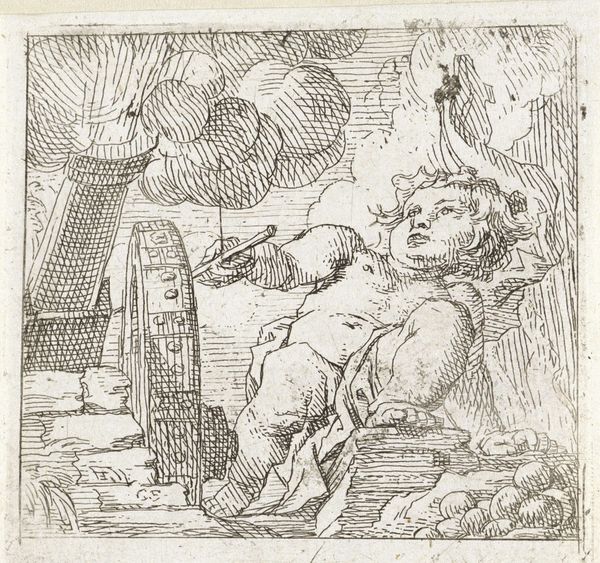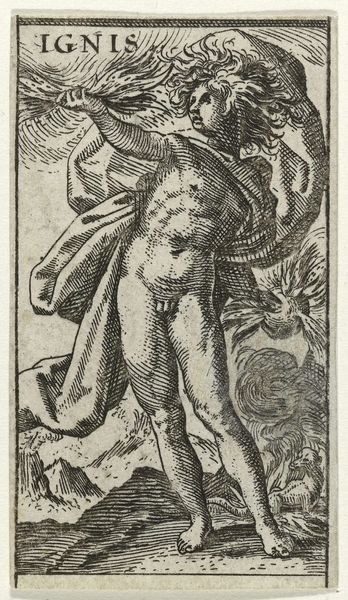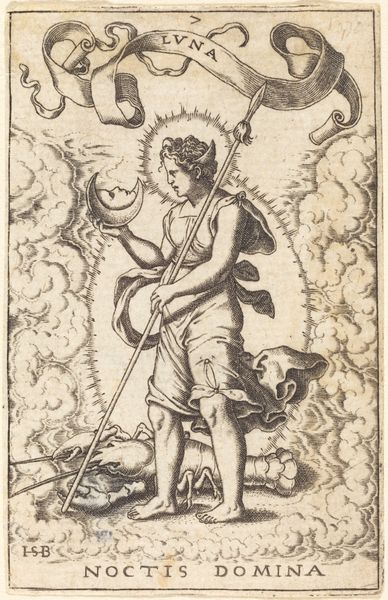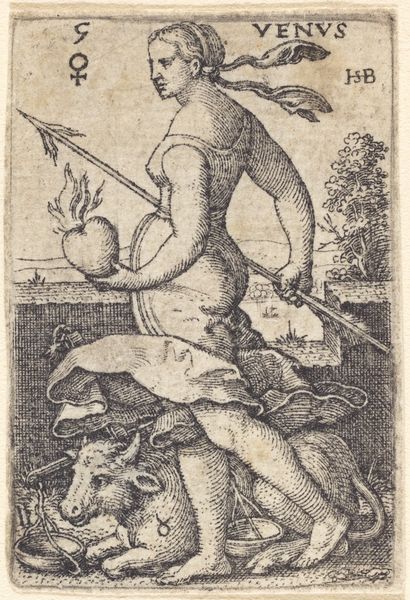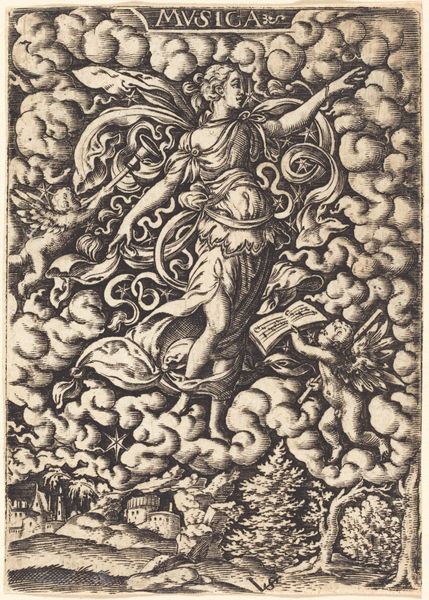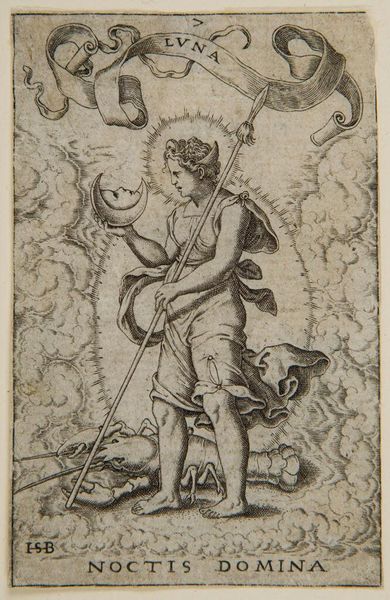
drawing, ink, engraving
#
drawing
#
allegory
#
baroque
#
pen drawing
#
pen illustration
#
pen sketch
#
figuration
#
ink line art
#
ink
#
engraving
Dimensions: height 68 mm, width 55 mm
Copyright: Rijks Museum: Open Domain
Cornelius Schut created this tiny print of the Christ Child sometime in the 17th century. It’s made using etching, a printmaking technique that relies on the corrosive power of acid. The artist would have coated a copper plate with a waxy substance, drawn an image into it with a needle, then submerged the plate in acid. This eats away the exposed lines, leaving an image in relief. The plate is then inked and printed. Think about the physical effort involved in this method. Schut would have needed a steady hand, and an expert understanding of the materials to achieve this level of detail. What makes this kind of printmaking so compelling is the way it democratizes image-making. Etchings like this one could be reproduced in multiples, easily shared and collected. While Schut may be known today as a fine artist, he was also operating within a sophisticated system of production and exchange. This simple print is a great example of how art and craft come together.
Comments
No comments
Be the first to comment and join the conversation on the ultimate creative platform.
